
Softball is a sport similar to baseball, and it is played with a larger ball on a smaller field and with only underhand pitches permitted. Softball is played competitively at club levels, the college level, and the professional level. The game was first created in 1887 in Chicago by George Hancock.
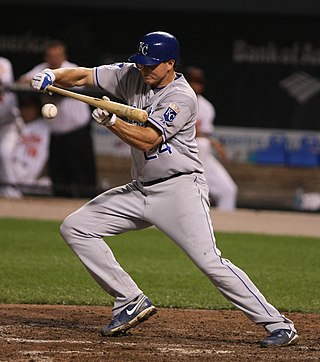
A bunt is a batting technique in baseball or fastpitch softball. Official Baseball Rules define a bunt as follows: "A BUNT is a batted ball not swung at, but intentionally met with the bat and tapped slowly within the infield." To bunt, the batter loosely holds the bat in front of home plate and intentionally taps the ball into play. A properly executed bunt will create weak contact with the ball and/or strategically direct it, forcing the infielders to make a difficult defensive play to record an out.
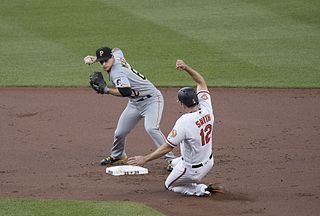
In baseball and softball, a double play is the act of making two outs during the same continuous play. Double plays can occur any time there is at least one baserunner and fewer than two outs.
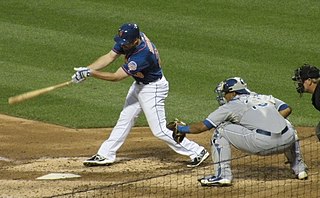
Catcher is a position in baseball and softball. When a batter takes their turn to hit, the catcher crouches behind home plate, in front of the (home) umpire, and receives the ball from the pitcher. In addition to this primary duty, the catcher is also called upon to master many other skills in order to field the position well. The role of the catcher is similar to that of the wicket-keeper in cricket.

A first baseman, abbreviated 1B, is the player on a baseball or softball team who fields the area nearest first base, the first of four bases a baserunner must touch in succession to score a run. The first baseman is responsible for the majority of plays made at that base. In the numbering system used to record defensive plays, the first baseman is assigned the number 3.
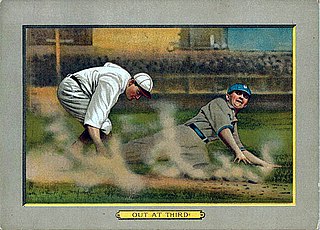
In baseball, an out occurs when the umpire rules a batter or baserunner out. When a batter or runner is out, they lose their ability to score a run and must return to the dugout until their next turn at bat. When three outs are recorded in a half-inning, the batting team's turn expires.

Throughout the history of baseball, the rules have frequently changed as the game continues to evolve. A few common rules most professional leagues have in common is that four balls is a base on balls, three strikes is a strikeout, and three outs end a half-inning.

In baseball and softball, a tag out, sometimes just called a tag, is a play in which a baserunner is out because a fielder touches him with the ball or with the hand or glove holding the ball, while the ball is live and the runner is in jeopardy of being put out – usually when he is not touching a base.

In baseball, a rundown, informally known as a pickle, the hotbox, or goose chase is a situation that occurs when the baserunner is stranded between two bases, also known as no-man's land, and is in jeopardy of being tagged out. When the baserunner attempts to advance to the next base, he is cut off by the defensive player who has a live ball, and attempts to return to his previous base before being tagged out. As he is doing this, the defender throws the ball past the baserunner to the defender at the previous base, forcing the baserunner to reverse directions again. This is repeated until the runner is put out or reaches a base safely.
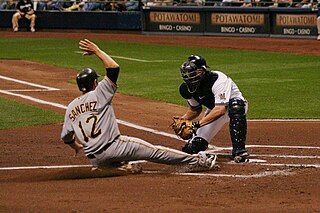
In baseball, blocking the plate is a technique performed by a catcher to prevent a runner from scoring. The act of blocking the plate accounted for most of the physical contact in Major League Baseball prior to the 2014 season, when it was outlawed except when the catcher already has possession of the ball.
A hit and run is a high risk, high reward offensive strategy used in baseball. It uses a stolen base attempt to try to place the defending infielders out of position for an attempted base hit.
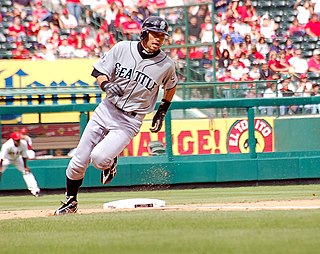
In baseball, base running is the act of running from base to base, performed by members of the team at bat.














